Located in Dongcheng District, Beijing, the Temple of Heaven was built in the 18th year of the Yongle reign of the Ming Dynasty (1420). It was the place where the emperors of the Ming and Qing dynasties offered sacrifices to heaven, prayed for good harvests and rain, and is also the largest existing ancient sacrificial building complex in China. In 1988, the Temple of Heaven was opened to the public as a park. Today, the Temple of Heaven has become a good place for people to take a leisure walk, sightsee, and learn about local culture.
Temple of Heaven Facts
- Address: No.7 Tiantan Road, Dongcheng District, Beijing 100050, China
- Area: 2,700,000 square meters
- Type: World Heritage Site, Historic Sites, Sights & Landmarks, Parks, Architectural Buildings
- Main attractions: Hall of Prayer for Good Harvests, Imperial Vault of Heaven, Circular Mound, etc.
- Recommended Visiting Time: 1 ~ 2 hours
The Temple of Heaven is part of Beijing’s Central Axis, which is a group of buildings and archaeological sites. The Temple of Heaven was first built in the 18th year of the Yongle reign (1420). Emperors of the Ming and Qing dynasties moved their capital from the Forbidden City to the Temple of Heaven twice a year, set up camp, held sacrifices at the Temple of Heaven, prayed for a good harvest, and carried out large-scale reconstruction and expansion of the Temple of Heaven. In 1998, UNESCO listed the Temple of Heaven on the World Heritage List and commented that “the Temple of Heaven is a masterpiece of architecture and landscape design.”
Layout & Design
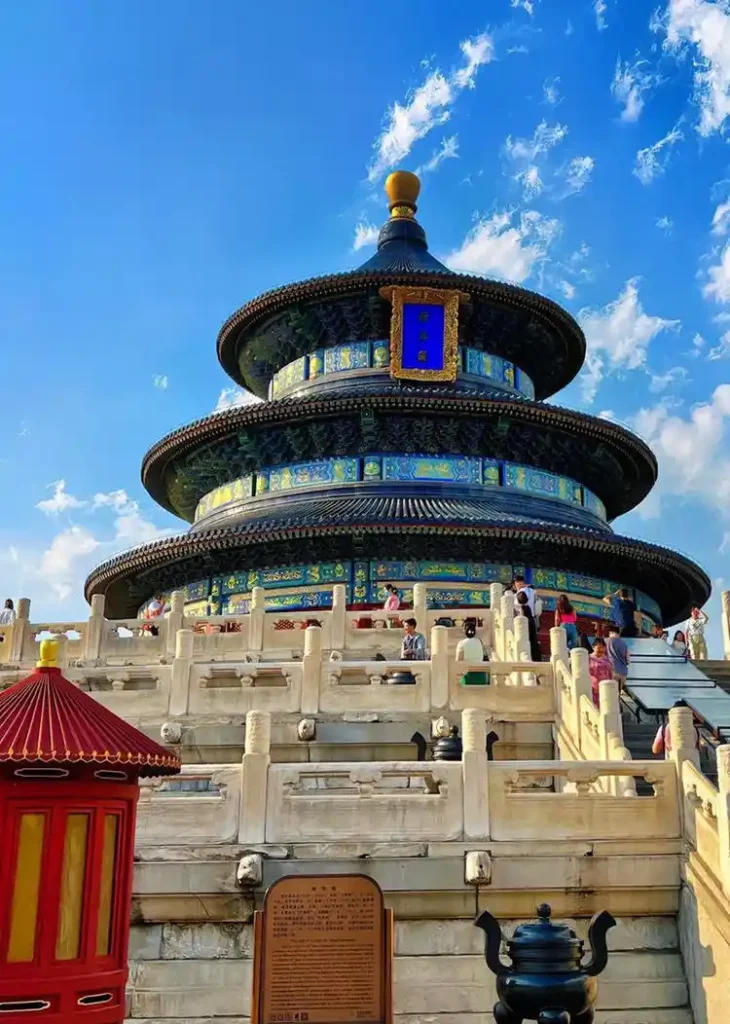
The Temple of Heaven is famous for its precise structure, unique design, and beautiful decoration. Covering an area of about 2.7 million square meters, it includes the Huanqiu Altar in the south and the Qigu Altar in the north. These two main parts are connected by a central path called Danbi Bridge. The most important building in Huanqiu Altar is the Huangqiongyu Hall, while Qigu Altar includes the Qinian Hall, Huangqian Hall, and Qinian Gate. Surrounded by ancient cypresses, the temple complex looks grand and peaceful. Based on ancient Chinese beliefs that heaven is round and earth is square, the temple’s design reflects this idea clearly.
The Temple of Heaven also shows advanced knowledge of architecture and acoustics. For example, the Echo Wall, Three Echo Stone, and Conversation Stone were built using scientific principles of sound. These features allow voices to travel clearly across long distances, creating amazing sound effects. As the largest existing sacrificial altar in China, the Temple of Heaven has great historical and cultural value. Its special layout and artistic beauty continue to attract visitors from around the world, making it a popular symbol of Chinese heritage and craftsmanship.
Temple of Heaven Map
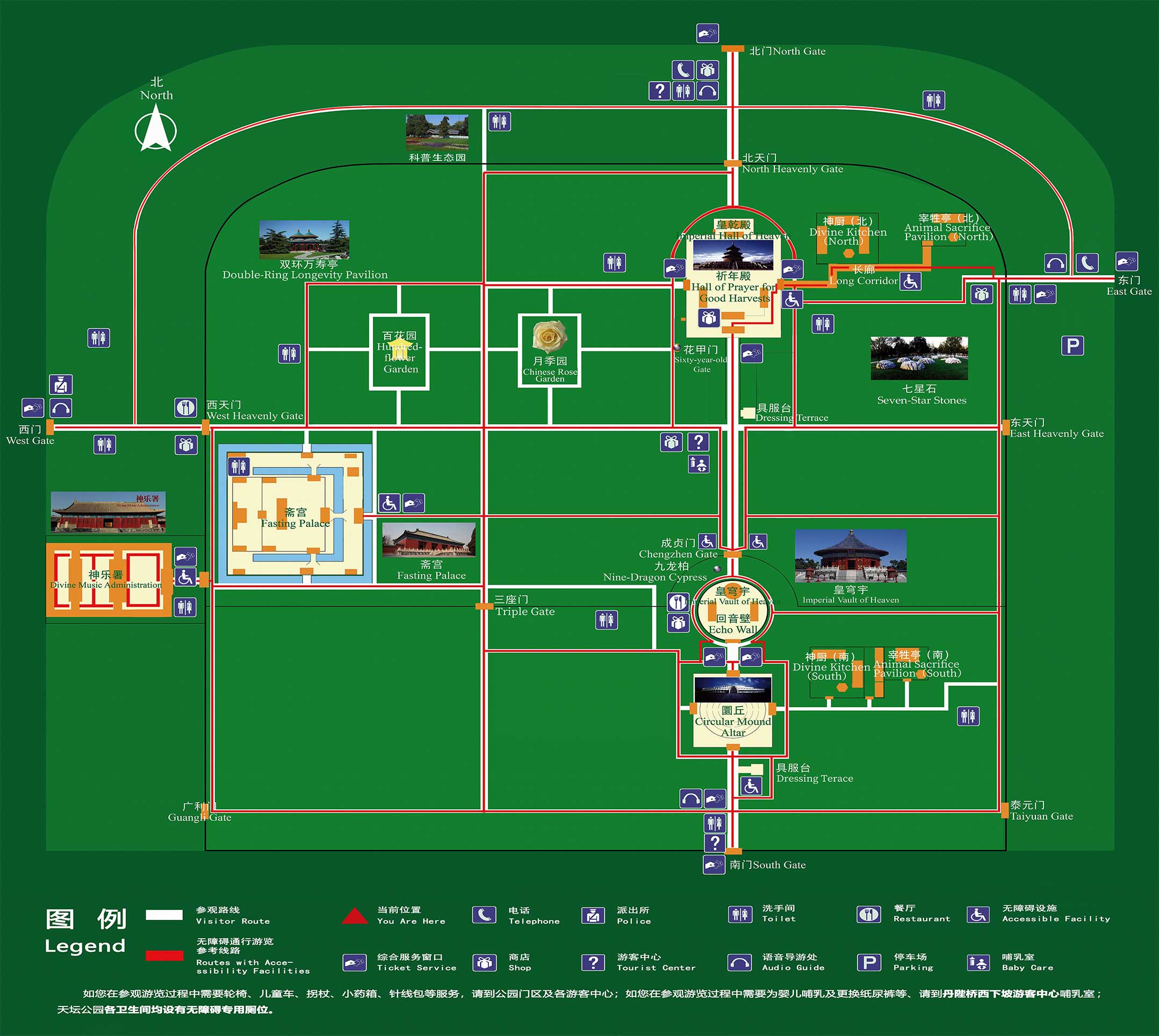
What to See in Temple of Heaven
The Temple of Heaven consists of two parts, the inner altar and the outer altar. The main ancient buildings and attractions are concentrated in the inner altar, and the outer altar is mainly composed of the ancillary buildings of the altar and the ancient tree community.
Qinian Hall
The Hall of Prayer for Good Harvests, a majestic circular wooden structure with triple eaves, stands 38 meters high and is situated on a three-tiered marble base. Used by emperors to pray for prosperous harvests, it features 28 pillars: four central “Dragon Well Pillars” symbolizing the seasons, 12 middle golden pillars representing the months, and 12 outer eave pillars indicating the daily hours. Together, these 24 pillars also embody the 24 solar terms, showcasing ancient Chinese wisdom in architecture and its profound connection with nature and time.
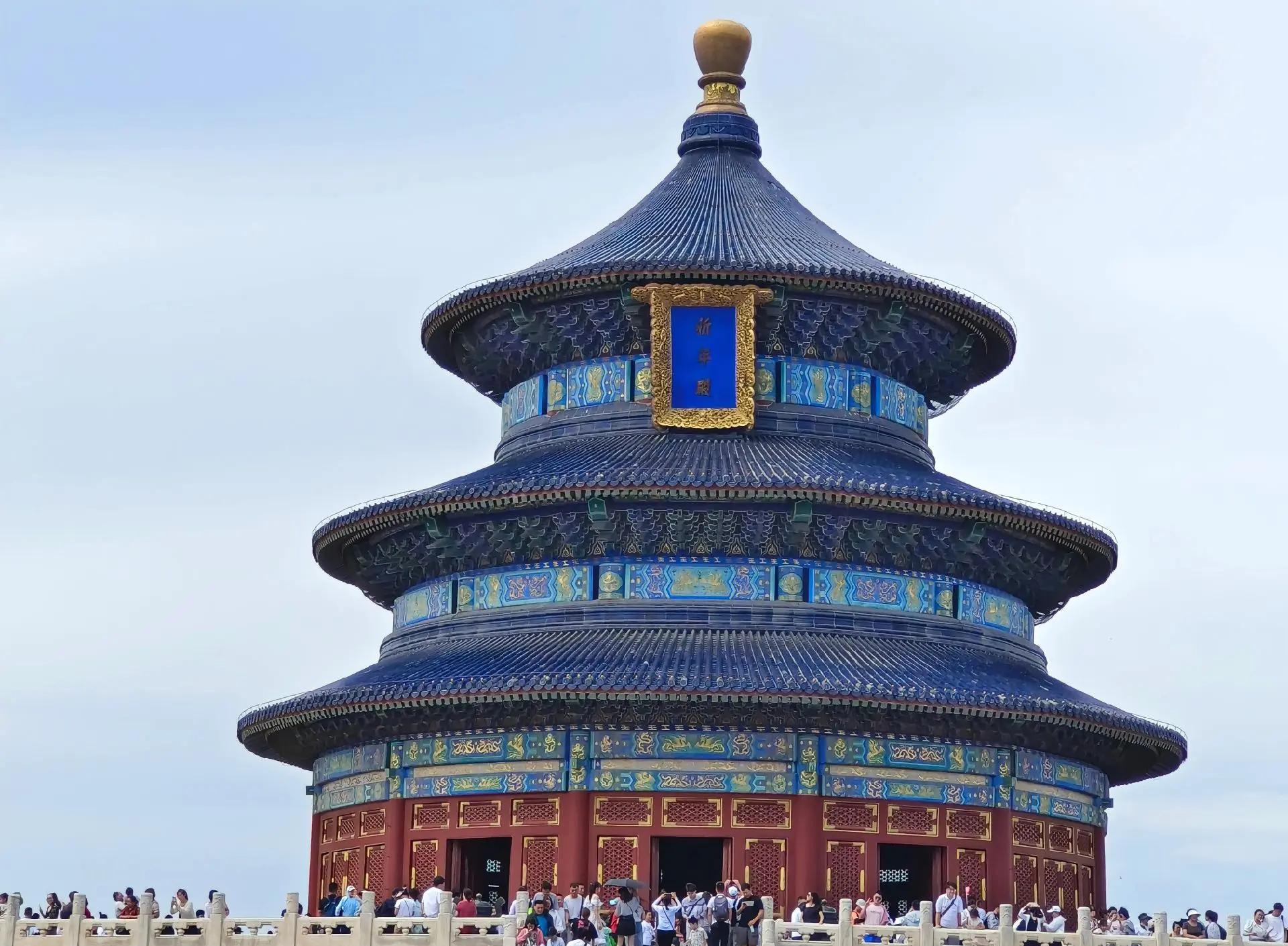
Circular Mound Altar
The Huanqiu Altar (Circular Mound Altar), located in the southern part of the Temple of Heaven, is a three-level circular platform made of white marble. It was used by emperors during the Ming and Qing dynasties to worship Heaven on the Winter Solstice. The topmost level centers on the “Heaven Heart Stone,” symbolizing the heart of the Supreme Being. Decorated with dragon carvings, the altar reflects imperial power, with the number nine — a symbol of the emperor — repeated in its design. Rituals were performed here, including burning offerings in a special stove, highlighting its role in ancient sacrificial ceremonies.
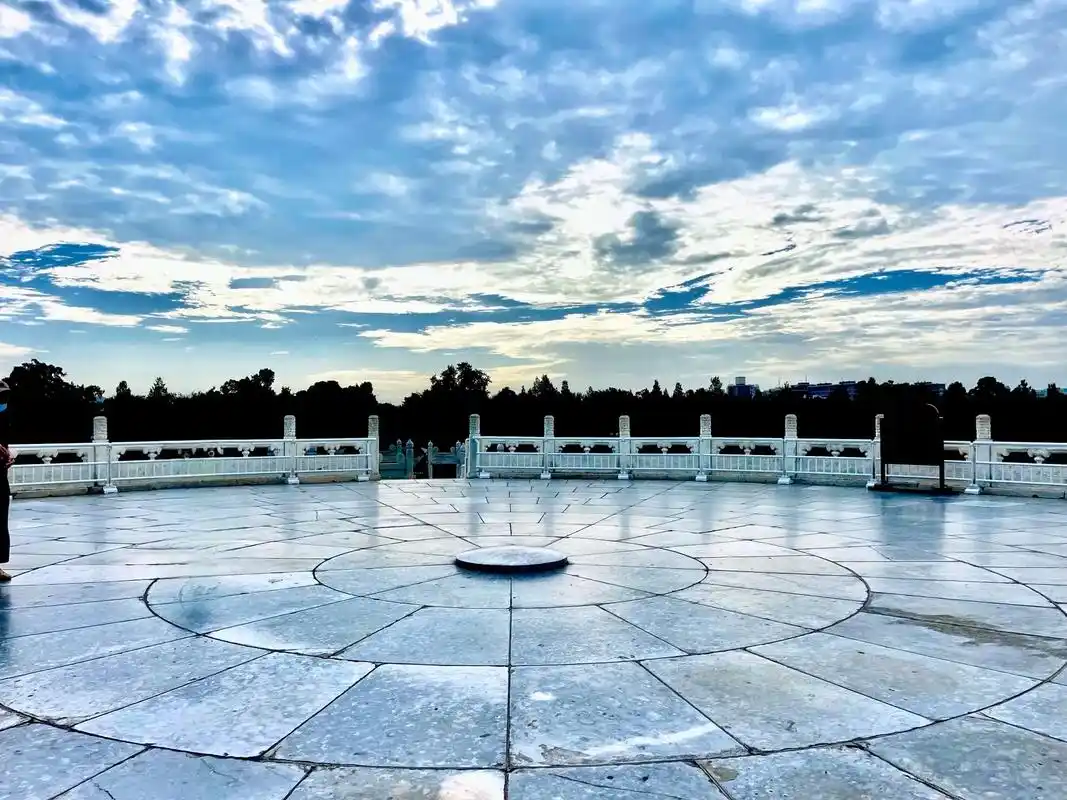
Imperial Vault of Heaven
Huangqiongyu Hall, located north of the Huanqiu Altar, is a smaller circular building with a single conical roof covered in blue glazed tiles, symbolizing the sky. It stands on a single-level marble base and houses tablets of deities, including God, the sun, moon, stars, and natural forces like wind and thunder. The hall features decorated pillars and vaults, reflecting its sacred role. Surrounded by the Echo Wall, which can carry sound over long distances, it highlights both spiritual meaning and advanced acoustic design in ancient Chinese architecture.
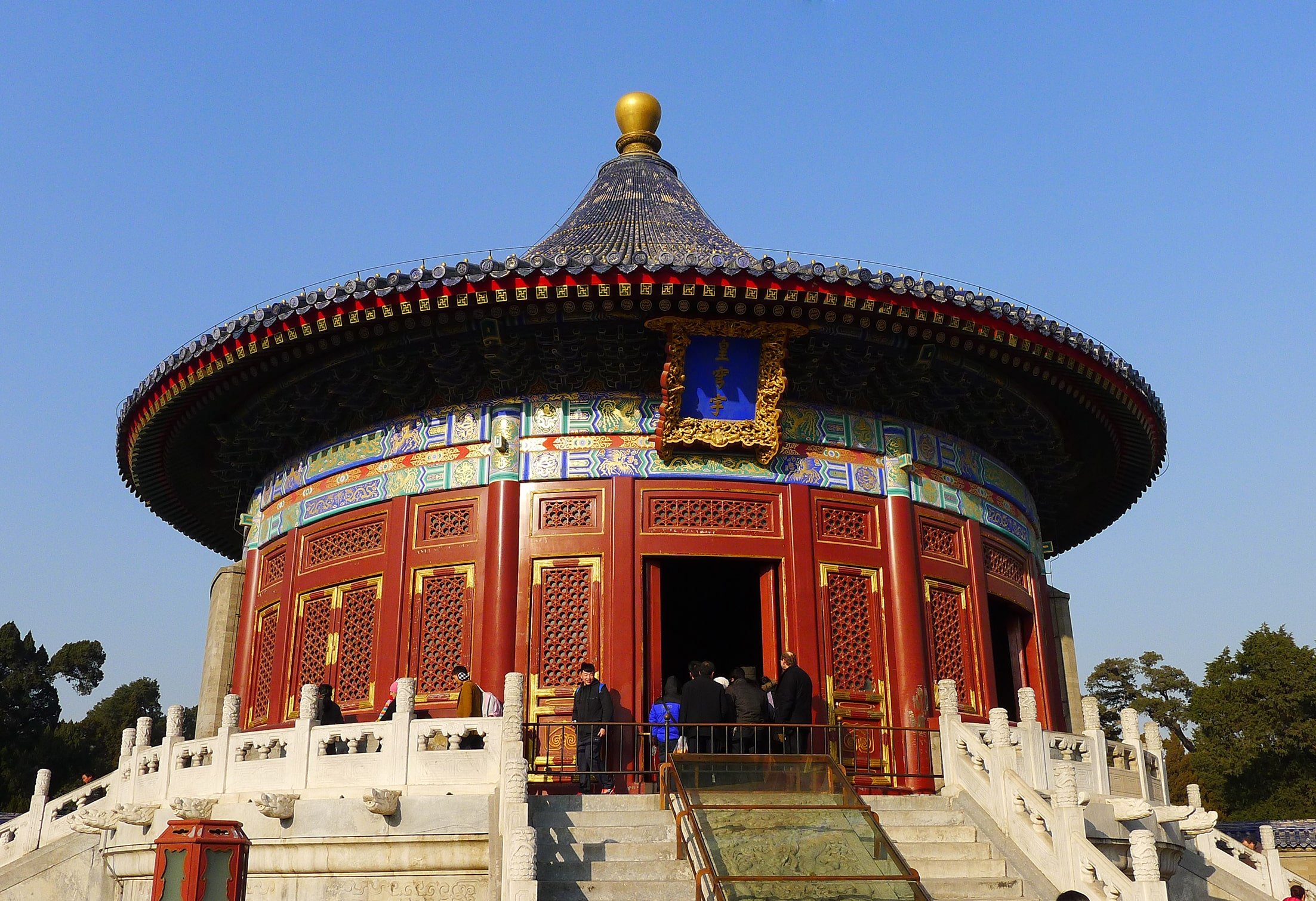
Palace of Abstinence
The Palace of Abstinence, built in 1420, is located southwest of the Hall of Prayer for Good Harvests. This 40,000 square meter complex was where the emperor fasted before the Heaven Worship Ceremony. It includes the Beamless Hall, Rest Palace, and Belfry, all within double walls and waterways. Here, the emperor observed strict rituals: no meat, alcohol, or distractions, to show respect to Heaven. The palace’s serene environment underscores the solemnity and spiritual focus essential for the ceremonies.
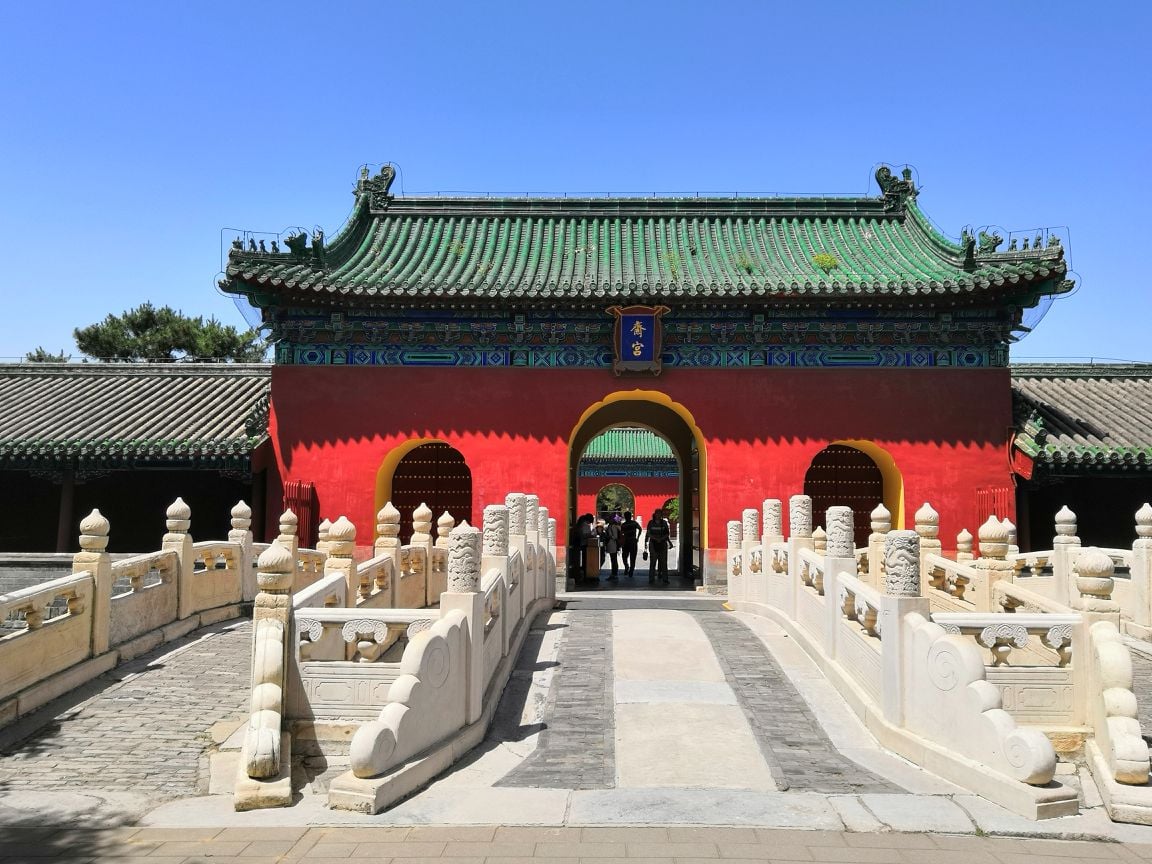
Divine Music Administration
The Divine Music Administration, located southwest of the Palace of Abstinence, is one of the five major buildings in the Temple of Heaven. Established in 1420 as the Divine Music Observatory and renamed in 1754, it served as the highest ritual music academy of the Ming and Qing dynasties. Here, court musicians rehearsed and managed ceremonial music for imperial sacrifices. The complex includes halls like Ningxi Hall and Xianyou Hall, along with practice rooms and costume stores, reflecting its key role in preserving and performing sacred musical traditions.
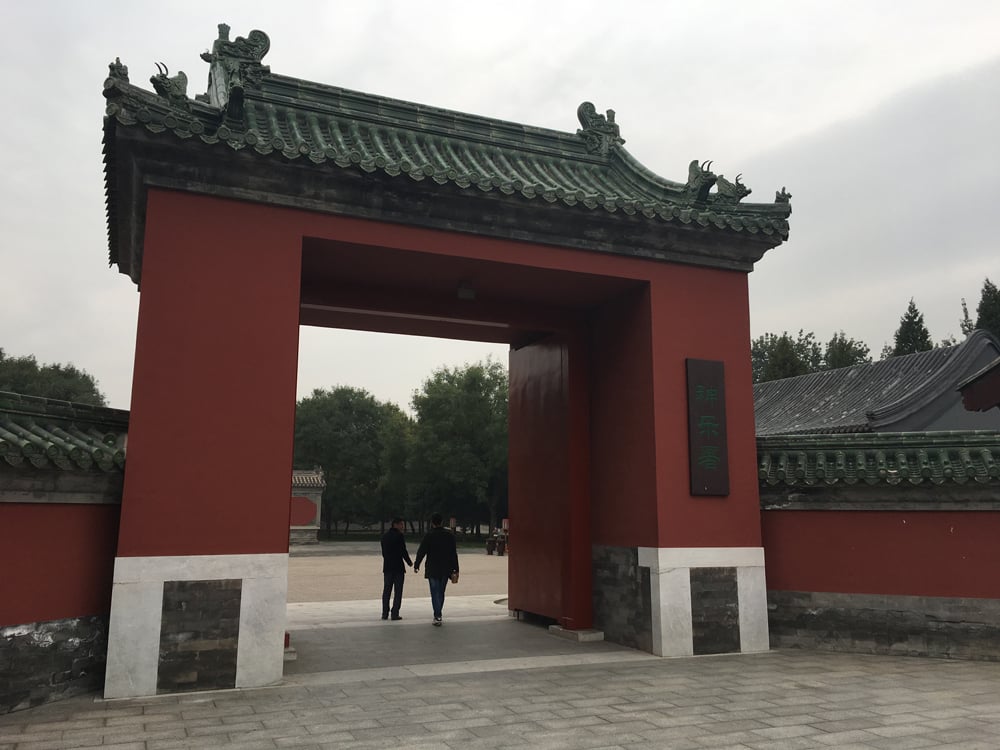
Danbi Bridge
The Danbi Bridge, also known as the Vermilion Steps Bridge or Sacred Way, connects the northern and southern parts of the Temple of Heaven. Built during the Ming Dynasty, it is a long brick-and-stone platform, 360 meters long and 29 meters wide, with a gradual rise from south to north. The bridge was used exclusively for imperial rituals, with separate paths: the central one for the emperor, one side for princes, and the other for high officials. Originally paved with city bricks, it was changed to cement bricks in 1976. Seen as a path to heaven, it played a key role in the spiritual and ceremonial layout of the temple.
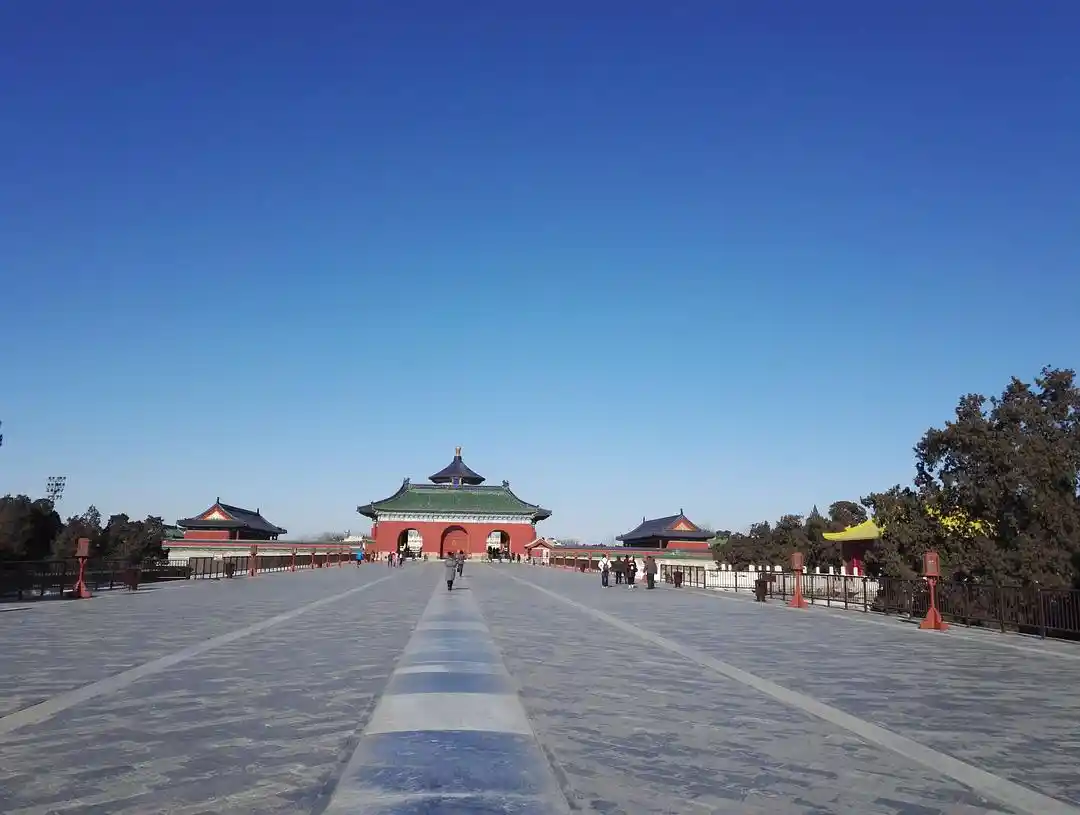
The Seventy-two Corridors
The Seventy-two Corridors, located in the east of the Hall of Prayer for Good Harvests, are L-shaped and connect the Hall of Prayer for Good Harvests and the Kitchen Courtyard. They were first built in the 18th year of the Yongle reign of the Ming Dynasty (1420) and were originally used as a passage for transporting sacrificial offerings. After renovation in 1937, they were opened as a corridor for tourists to rest. The corridor is 5 meters wide and 350 meters long, with a total of 72 rooms.
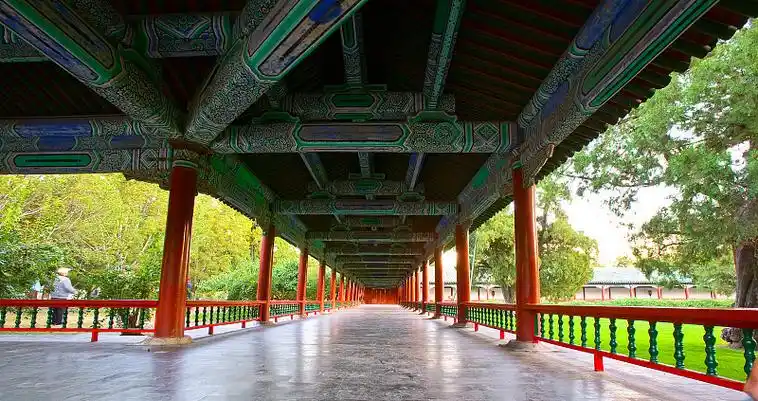
How to get to Temple of Heaven
East Gate, West Gate, South Gate, and North Gate are all available for entry. It is recommended to enter from the East Gate (direct subway access) or West Gate.
Buy Subway
- Take Metro Line 5 to Tiantan East Gate Station, exit from Exit A, and walk for 5 minutes to get there directly.
- Take Metro Line 8 to Tianqiao Station, exit from Exit C, and walk for 10 minutes to get there.
Buy Bus
- Take Bus No. 2, 20, 36, 53, 71, 72, 90, 93, 120, 622, Rapid Bus Line 1, and 141, and get off at Tiantan West Gate.
- Take bus No. 6, 34, 35, 36, 39, 41, 43, 60, 72, 116, 128, 599 and get off at Fahua Temple Station; take bus No. 54, 957, 958 and get off at Tiantan Stadium Station.
- Take bus No. 36, 53, 62, 122, 958, 141, 200 Inner Ring, 200 Outer Ring and get off at Tiantan South Gate.
- Take bus No. 6, 34, 35, 36, 72, 106, 110 and get off at Tiantan North Gate.
Temple of Heaven Ticket Price & Opening Hours
Temple of Heaven Ticket Discounts| Ticket Type | Apr. – Oct. | Nov. – Mar. |
|---|---|---|
| Entrance Fee | CNY 15 | CNY 10 |
| Hall of Prayer for Good Harvests, Circular Mound Altar & Echo Wall | CNY 20 | CNY 20 |
| Divine Music Administration | CNY 10 | CNY 10 |
| Combo Ticket (including the entrance fee & above attractions) | CNY 34 | CNY 28 |
| Opening Hours | 1. Temple of Heaven: 06:00 – 22:00; stop entering at 21:00 2. Main attractions inside: 08:00 – 18:00; stop entering at 17:30; close on Mondays except for puclic holidays | 1. 06:30 – 22:00; stop entering at 21:00 2. Main attractions inside: 08:00 -17:00; stop entering at 16:30; close on Mondays except for puclic holidays |
| Audio Guide | Position: At the four gates Time: 8:00—17:00 Languages: Cantonese, English, Japanese, Korean, French, German, Spanish Rental: CNY 40; CNY 100 as deposit. | |
Night lighting: The Hall of Prayer for Good Harvests lighting is only open on Friday, Saturday and major holidays at night. The lighting time is the same as the municipal street lights and is closed at 21:00.
Temple of Heaven Touring Routes
3-hour tour (enter from the east gate → exit from the west gate)
Seventy-two corridors → Hall of Prayer for Good Harvests → Danbi Bridge → Imperial Vault of Heaven → Echo Wall → Circular Mound → Double Ring Longevity Pavilion → Hundred Flowers Garden
Highlights:
- Seventy-two corridors: wooden corridors with interweaving light and shadow, with colorful paintings telling historical stories.
- Danbi Bridge: 4-meter-high “Road to Heaven”, feel the solemnity of the emperor’s sacrifice.
- Echo Wall: whisper with your companions through the wall and experience the miracle of acoustics.
2-hour quick tour (enter from the south gate → exit from the west gate)
Circular Mound → Echo Wall → Nine Dragon Cypress → Danbi Bridge → Hall of Prayer for Good Harvests
Highlights:
- Suitable for: Tourists with tight schedules, focus on checking in the core buildings.
- Squirrels often appear near the Nine Dragon Cypress, you can bring walnuts to feed them.
Temple of Heaven FAQs
There are many places to store luggage near the East Gate/West Gate subway stations of the Temple of Heaven. Backpacks are 10 yuan/day and suitcases are 20 yuan/day.
Yinsan Douzhi (East Gate): Try the old Beijing specialty Douzhi Jiaoquan.
Siji Minfu Roast Duck (outside Donghua Gate): The view seat overlooks the Forbidden City.